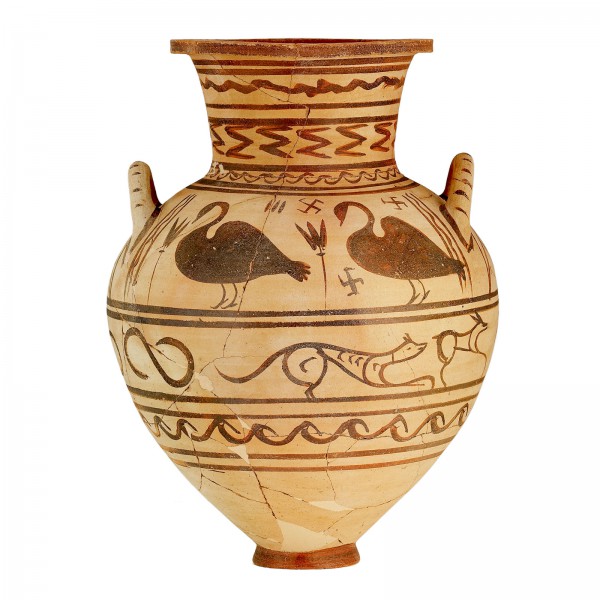From Mount Athos to Mount Olympus in the Iron Age (1100 – 700 BC)
In Macedonia, the period between 1100 and 700 BC, known as the Iron Age, is considered a "dark age". Nevertheless, this exhibition presents the latest excavation data that show the advent of important changes in the economic and social life of settlements at the time. A major building often dominates these sites, interpreted either as the residence of prominent members of society or a communal space of great significance. Those buildings are usually accompanied by auxiliary spaces and spacious storerooms for the storage of agricultural surplus. Trade and exchange contacts also intensify and metalworking is on the rise. Luxurious drinking vessels signify a rising social class, which incorporates practices copied from the aristocracy of central and southern Greece.

The new changes in spatial organisation of settlements are also evident in the treatment of the dead, as organised and clearly delineated cemeteries now appear, while burial practices, such as pots and jewellery accompanying the deceased as grave goods, show closer contacts between the various regions across the Aegean sea. During the Iron Age, Macedonia is incorporated into a wide exchange network, where people, goods and technological know-how circulate widely alongside values and ideas.
The artefacts on display come from excavated sites around the Thermaic Gulf, from mount Athos to the Macedonian slopes of Olympus, such as Mende, Assiros, Anchialos, Kastanas, Krania of Olympus etc.


















